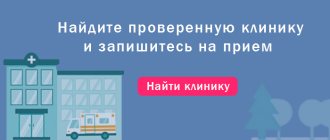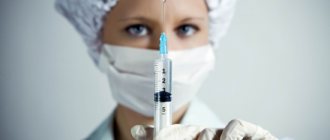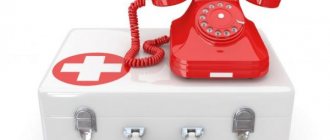The article describes the symptoms of chronic pyelonephritis in women, including during pregnancy. Treatment methods, prognosis and prevention of the disease are described.
Women, due to the structure of the genitourinary system, are more susceptible to kidney diseases than men. A disease such as pyelonephritis is observed in the fair sex many times more often. Often the disease becomes chronic. How does chronic pyelonephritis occur in women, symptoms and treatment of the disease, especially during pregnancy.
Pyelonephritis is the most common disease of the genitourinary system in women
Pyelonephritis in women: symptoms and treatment
The main danger of pyelonephritis is that absolutely all representatives of the fair sex are at risk. The female anatomy is designed in such a way that an infection, entering the large but narrow urethra, which is also located near the anus, can quickly penetrate through the ascending route into the kidneys.
But there is a way to protect yourself from this unpleasant, insidious pathology - take care of your health and prevent the appearance of the main factors for the development of pyelonephritis, which include:
- nervous stress
- fatigue
- hypothermia
- AIDS
- diseases of the genitourinary system
- diabetes
- angina
- caries
- spinal cord injuries
Unfortunately, it is possible that the infection that causes pyelonephritis can enter your body through a descending route - through the blood.
Doctors warn that any untreated illness accompanied by an inflammatory process in the body can lead to pyelonephritis, because this disease is secondary, that is, it appears against the background of the underlying pathology. After all, weakened immunity and the presence of any infection in any organ, for example, E. coli, chlamydia, staphylococcus, are an excellent environment for the development of pyelonephritis.
Possible consequences of the disease
Pyelonephritis itself is not considered a serious disease. If treatment is started on time, it responds well to therapy.
In the absence or incompleteness of treatment, pyelonephritis becomes chronic. In this case, exacerbations with characteristic painful symptoms occur periodically. A long course of this process is fraught with severe kidney damage. The consequences of the disease are especially dangerous for pregnant women and women with diabetes.
Chronic pyelonephritis often leads to the formation of kidney stones - urolithiasis develops, causing attacks of unbearable pain (renal colic). Surgery may be required to treat it.
Another serious complication is chronic renal failure. This condition leads to intoxication of the body and requires regular use of an artificial kidney apparatus. The patient's life expectancy is significantly reduced, and with exacerbation of the disease, death is possible.
Another possible complication is sepsis. An increase in the number of bacteria can cause them to enter the bloodstream and develop a condition known as “blood poisoning,” which can also be fatal.
↑
Symptoms of pyelonephritis in women
If the disease has overcome you, then you will immediately feel it by the symptoms that are characteristic of it:
- You will constantly have a high temperature, which practically cannot be brought down by anything;
- Blood pressure will increase;
- Heart rate will increase;
- You will experience severe back pain that is aching and dull;
- The general condition will be weak;
- There will be a frequent urge to urinate;
- Nausea and vomiting will appear;
- Limbs will swell greatly;
- Signs of cystitis may also appear - blood in cloudy urine, copious and unpleasant-smelling vaginal discharge.
Of course, every woman’s body is individual, so in one woman all of the above signs of pyelonephritis may manifest themselves, while in another - only some of them. In any case, it is necessary to urgently consult a doctor to prevent pyelonephritis from developing into an acute or chronic form.
Treatment of pyelonephritis in women
When you see a doctor, you will be prescribed a special diagnosis that will either confirm the presence of pyelonephritis or deny it. It includes the following procedures:
- Examination by a nephrologist, urologist and gynecologist.
- A general and biochemical blood test to determine the number of leukocytes in it (as a rule, the more there are, the worse the condition).
- Urine tests to identify the level of acidity and color, as well as the causative agent of pyelonephritis (we are talking about the infection that provoked the disease, since the patient’s further treatment will be aimed at combating it.)
- Ultrasound of the kidneys, as well as CT, MRI, if the case is extremely severe.
When the diagnosis is confirmed, you will be prescribed a two-week course of drug therapy, without which, unfortunately, it will not be possible to overcome the infection in the body. For the treatment of latent pyelonephritis in women, the following drugs are prescribed :
Antibiotics
- Biseptol
- Amoxicillin
- Trimoxazole
- Ciprofloxacin
- Cefuroxime
- Gentamicin
- Cefepime
- Meronem
Antibacterial agents
- Furagin
- Nitroxoline
- Gramurin
- Nevigramon
- Palin
- Bactrim
Painkillers
- No-shpa
- Spasmoverine
Patients who have been diagnosed with pyelonephritis will have to register with a nephrologist and be observed by him for a year or even two years. During this time, you will need to take a monthly urine test.
In addition to pharmacological medications, doctors often prescribe that patients with pyelonephritis use traditional recipes for recovery. It includes decoctions and tinctures from natural ingredients:
- Recipe No. 1 : Mix honey and viburnum in equal proportions and take this mixture three times a day before meals, one tablespoon.
- Recipe No. 2 : Two tablespoons of flaxseeds must be dissolved in boiled water (two glasses will be enough). This solution must be boiled for 5 minutes and then left for an hour to infuse. For two days, this infusion should be drunk twice a day, half a glass. Thanks to this recipe, the kidneys are cleansed and their inflammation is relieved.
- Recipe No. 3: Mix potato and rowan juices in equal proportions. The resulting liquid should be taken once a day, half a glass.
- Recipe No. 4: Add one glass of oats to a liter of milk and put on fire. Wait until half the milk has boiled away. You should get a kind of “oatmeal jelly”, which should be taken four times a day, a quarter glass.
- Recipe No. 5 : Add two tablespoons of birch leaves to a liter of boiled water. Then this mixture should be placed in a water bath and allowed to simmer there for 10-15 minutes. It should be taken three times a day, one glass before meals.
Traditional treatment of pyelonephritis in women involves:
- drinking lingonberry herbal teas;
- decoctions of chamomile and calendula;
- propolis therapy, which has an anti-inflammatory and mild analgesic effect;
- women are also prescribed bed rest at home, if the form of the disease is not severe, or in a hospital;
- a special diet “Table No. 7” is prescribed, thanks to which the symptoms of pyelonephritis recede much faster.
What is a diet for pyelonephritis:
- Patients need to eat diuretic foods in unlimited quantities - zucchini, pumpkin, watermelons and melons.
- It is extremely important to exclude salt, protein, and rich broths from your diet. This is necessary to reduce the load on the kidneys.
- Meat, fish and poultry should be lean and steamed or cooked in the oven.
- You can eat any dairy products. The only exception is cheese.
- It is forbidden to eat onions, garlic, radishes, radishes, sorrel, spinach, pickled vegetables, and chocolate.
- You should not drink sweet carbonated water and mineral water with a high sodium content.
By following the clear instructions of the attending physician, which will correspond to the treatment methods described above, you can completely recover from latent pyelonephritis. If the disease has already acquired an acute or chronic form, the woman will have to undergo a slightly different treatment course.
Diagnostic criteria for determining the disease
The diagnosis is made taking into account the clinical picture of the disease and based on the patient’s medical history. An asymptomatic or latent course significantly complicates research and identification of not only chronic, but sometimes acute forms of inflammation.
Laboratory test indicators
It is important to differentiate this disease from glomerulonephritis, amyloidosis, and glomerulosclerosis. During the examination, paramount importance is attached to the data of laboratory tests, on the basis of which a preliminary diagnosis is made.
- Urine in adults becomes dark, cloudy, and has an unpleasant odor. There are flakes in the sediment. Inflammation is determined by the presence of protein and a large number of leukocytes.
- In the test according to Nechiporenko’s method, leukocytosis predominates over erythrocytes.
- Based on the results of bacterial culture of urine, over 100 thousand pathogenic bodies are detected in 1 ml.
- Blood test indicators: exceeding the norms of leukocytes, neutrophils, ESR, creatinine and urea.
When diagnosing pyelonephritis, it is important to exclude a gynecological disease. In the presence of inflammation, the slightly acidic pH of urine suddenly changes to alkaline.
Signs of inflammation during instrumental examination
Confirmation of the diagnosis is carried out after instrumental examination. The basis is ultrasound imaging of the kidneys. A sign of extensive inflammation is damage to the bladder and nearby organs. Other methods are also considered the most accessible and highly informative.
- Ultrasound. The size of the kidneys is increased, the echogenicity of the ureters is reduced.
- Excretory urography with contrast. The functional passivity of the organ and the narrowing of the excretory tract are revealed.
- CT. An increase in the inflamed kidney, thickening of the calyces and pelvis is determined, which is considered a sign of the presence of stones and the development of urolithiasis.
Additionally, a consultation with an ophthalmologist, phthisiatrician, dentist, or ENT doctor is scheduled. The first assesses the condition of the fundus, the others must rule out infection.
Symptoms of acute pyelonephritis in women
Let us immediately note that, fortunately, acute pyelonephritis or, as it is also called, nephrotic syndrome, is quite rare in women. However, no one is immune from this kidney pathology, so it is important to know what it is.
It is very easy to identify the symptoms of nephrotic syndrome:
- A woman feels unbearable girdle pain in the abdomen and lower back
- Her body temperature rose sharply to 40 °C and her blood pressure rose
- Urination is very painful, there is blood and even pus in the urine
- Swelling of the extremities is constantly increasing
For acute pyelonephritis in women, doctors prescribe tests as standard (general analysis of urine and blood), and also mandatory radionuclide diagnostics, used if a combination of pathology with tumors is suspected.
It is very difficult to cure the acute form of pyelonephritis, because, as medical statistics show, the chances of a complete recovery are reduced to zero. Most patients diagnosed with nephrotic syndrome died due to the accumulation of toxic substances in the blood, such as creatinine and urea. At elevated concentrations, they cause irreparable harm to internal organs and even the brain.
How to treat acute pyelonephritis in women?
Antibacterial therapy for pyelonephritis involves the use of droppers and injections:
- penicillin
- oxacillin
- ampicillin
- methicillin
- ampioxa
- chloramphenicol succinate
- gentamicin or garamicin
- erythromycin
- tseporina
- kefzola
- tsiprobaya
- tarivida
- lincomycin
- ristomycin
- Rondomycin
- vibramycin
- nitroxoline
Antifungal therapy:
- nystatin
- levorin
- vitamins B1, B6, B12, C, P, P
- diphenhydramine
- pipolfen
- suprastin
- tavegil
Catheterization of the ureters is also performed to remove the obstruction to the normal flow of urine. In some cases, emergency surgery is resorted to.
Diagnostics
Suspicions of pyelonephritis become a reason to visit a nephrologist - it is this doctor who diagnoses the disease. Diagnostic methods are as follows:
- survey;
- visual inspection;
- tapping on the back in the kidney area (presence of Pasternatsky's symptom);
- X-ray, bilateral ultrasound of the kidneys;
- sonography of the genitourinary system;
- blood and urine tests.
A nephrologist, analyzing the general condition of the patient, can choose one or more examination methods, based on which he draws conclusions and chooses a course of treatment.
Chronic pyelonephritis in women
Another difficult form of female pyelonephritis is chronic pyelonephritis, in which women constantly experience exacerbations of this disease or its remissions throughout their lives. Chronic pyelonephritis in women has signs that are not quite typical for it:
- vaginal discharge
- pain when urinating
- frequent urge to urinate
In addition, the chronic stage of female pyelonephritis can occur in different forms:
- Nephrotic (similar to the acute form of pyelonephritis in symptoms and treatment methods).
- Hypertensive – when high blood pressure makes itself felt most. This form of chronic pyelonephritis can cause a stroke.
- Hematuric - the main symptom of this form of pyelonephritis is the red color of urine, which is obtained due to the increased number of red blood cells in the urine.
- Mixed (combination of signs of nephrotic and hypertensive chronic pyelonephritis)
The course of treatment for chronic pyelonephritis is very long and includes several basic measures:
- Elimination of the reasons due to which the flow of urine is disrupted (most often, for this, doctors resort to surgical intervention).
- Drug therapy. Doctors prescribe a large number of broad-spectrum antibacterial drugs to patients.
- Increasing immunity with the help of herbal tinctures and decoctions, as well as complex treatment in sanatorium-prophylactic complexes.
Possible complications of kidney inflammation
Today, ordinary pyelonephritis is easily treatable. Its complicated forms are dangerous:
- emphysematous nephritis;
- calculous cholecystitis;
- necrotizing papillitis;
- polycystic disease;
- kidney abscess or carbuncle;
- apostematous nephritis.
Chronic pyelonephritis, in the absence of symptoms and a sluggish process, can also lead to the development of complications. They are:
- arterial hypertension;
- acute renal failure;
- proteinuria - protein in the urine;
- pyonephrosis – purulent melting;
- xanthogranulomatous pyelonephritis.
The latter is considered a rare form of inflammation of the parenchyma, which is characterized by diffuse damage to it or individual segments. The pathology is characterized by aggressive spread to surrounding tissues and affects men aged 50-60 years.
Pyelonephritis during pregnancy
Unfortunately, pyelonephritis during pregnancy is a common occurrence. The disease occurs as the fetus grows, which puts pressure on the bladder, causing the normal flow of urine to be disrupted.
Symptoms of pyelonephritis in women during pregnancy are standard:
- pain when urinating
- discomfort in the back
- sudden increase in body temperature
All this can be dangerous not only for the woman’s life, but also for the child, so pyelonephritis in pregnant women must be treated with extreme caution so as not to harm the baby. Doctors prescribe medications that are not contraindicated for women in an interesting situation. These include:
- Monural
- Amoxiclav
- Canephron
- Phytolysin
Risk factors
There are certain conditions that increase the likelihood of developing the disease.
These include the following factors:
- Conditions that help urine move from bottom to top. The process is otherwise called pelvic-renal reflux. The reflux of urine from the pelvis to another structure of the kidney appears due to various malformations of the urinary tract - urolithiasis, pathological narrowing of the ureter, sclerosis of the bladder neck.
- Common pathologies of a severe nature - diabetes, liver cirrhosis, tuberculosis. And also AIDS, spinal cord injury.
- Age category, since the risk of occurrence increases with age.
- Decreased immune function.
- Lack of severe vitamins.
- Surgery on the organs of the urinary system.
- Long-term use of medications with hormonal composition.
- Features of life and work – frequent hypothermia, work in hazardous industries, poor nutrition.
Signs that increase the likelihood of acute pyelonephritis may be different. But the outcome is the same - the penetration of pathogenic microorganisms into the kidney and the onset of the disease.
Prevention of pyelonephritis in women
It is quite possible to protect yourself from pyelonephritis if you are careful about your health. It is enough to do basic things:
- prevent the development of dental caries
- observe personal hygiene rules
- do not self-medicate if you are sick with something
- eat healthy and balanced
- at the first urge to go to the toilet
- avoid constipation
- do not get too cold and do not get overtired.
Doctors also strongly recommend having a moderate sex life, since it has already been scientifically proven that excessive activity in bed can lead to pyelonephritis. Of course, it is important to have one regular sexual partner.
In the video below, nephrologists and urologists talk about the causes of pyelonephritis in women, methods of treating its different forms and preventive measures that every woman should follow.









